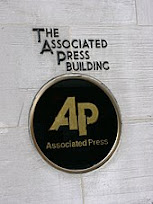The impact of the first newspapers
It seems silly to think that I have never thought about this before because if Benjamin Harris didn't fight for the creation of newspapers in 1660, my dream profession may have never existed. I found this presentation to be extra interesting because I had no idea how difficult it was to start a paper and to keep it running. It was also mind-boggling to me that censorship has continued to impact journalism from the creation of the first newspaper to reporters being sent to jail or silenced currently for going against government beliefs.
The first newspaper to be continuously published in the U.S. was created by John Campbell on April 24, 1704, and was called the Boston News-Letter. This paper also impacted my future career because it proved that people want their voices heard and want to be in the know, especially when social issues are occurring. This paper played a huge role in the lead-up to the American Revolution and the publicity around the revolution made people come back to the paper for more.
As I mentioned, Benjamin Harris created the first ever newspaper in the colonies in 1660 called Publick Occurrences. This made the colonists happy, because it gave them the ability to read someone else's perspective other than the perspective of the government. Publick Occurrences opened the door for colonists to read about topics, see what others had to say and discuss situations that typically were off limits for colonists to discuss.
The British government did not like what Harris was doing because they felt threatened by the power a newspaper would give to colonists to express their thoughts and get them talking about everyday issues. Freedom of Speech did not exist in the colonies for this reason because the British government wanted full control and didn't want to risk colonists realizing that others felt the same way they did because that could cause people to start getting together and have them want to figure out ways to distance themselves from the control of the government.
Harris's paper could only remain with the British government's stamp of approval, but they didn't want the paper to run because it challenged their ability to deceive the colonists who could originally only get their news from the government. Therefore, the paper did not stand a chance against the government at the time, and it was banned.
The government still tries to silence us, but we have Freedom of Speech luckily, so it is more challenging for the government to insert themselves into our everyday conversations. However, I have learned that the government still tries to control the conversations of its citizens and that it is important for us journalists to continue to hunt for the truth, or else we will be left in the dark and only hear the government's side. Benjamin Harris demonstrated that being a voice for the public and having a platform is essential in society because even after having the Publick Occurrences shut down he tried again in 1690.
This edition was shut down immediately in 1690, but I learned during the presentation that I have Harris to thank again for jump starting journalistic style writing. Harris added descriptive details and introduced the four-page format that had never been seen in any form of governmental press. Without Harris showing the significance of people being aware of what is going on outside of the information provided from the government and without adding this new format to journalism, the way that journalism is conducted in today's age may have never become a thing.
I appreciate Harris's work because my passion for journalism has stemmed from wanting to share the truth with people and allow peoples' voices to be heard through my writing. If Harris had not provided us with this platform many years ago, I'm not sure that I would be pursuing a journalism career without knowing that it was possible to go against the status quo and take risks to start the flame of change.
The first newspaper to be continuously published in the U.S. was created by John Campbell on April 24, 1704, and was called the Boston News-Letter. This paper also impacted my future career because it proved that people want their voices heard and want to be in the know, especially when social issues are occurring. This paper played a huge role in the lead-up to the American Revolution and the publicity around the revolution made people come back to the paper for more.
The sports industry has issues which are consistent with ones that are going on in the world and this paper demonstrates that people want to stay informed. Therefore, they need platforms that provide multiple viewpoints on situations to see the full picture and understand the situations on a deeper level.
Both papers have demonstrated the core reasons why I've gotten into this profession, and they have given me hope that even with censorship from the government, media consumers will continue to look to journalists to provide them with the proper information so that we can continue to make change and have a say in the way our world looks and runs.






